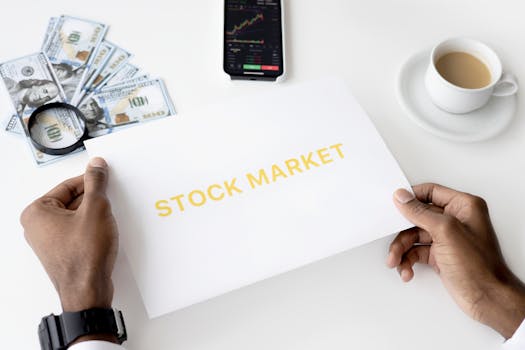Picture someone ready to grow their savings but unsure whether ETFs or mutual funds will serve them best. Many feel this choice defines their investing journey.
Deciding between ETFs and mutual funds impacts your flexibility, fees, and daily experience as an investor. Each product appeals to different behavior, knowledge, and financial goals.
If you’re unsure where to start, this guide will compare the two, address real-life scenarios, and help you match your financial habits to the right investment fit.
Pinpointing Differences to Make the Right Pick
Once you see how ETFs and mutual funds work side by side, investment strategies become easier to chart. Concrete comparisons reveal how each product reacts in everyday usage.
Suppose Anna prefers adjusting her investments midday while Ben only checks statements monthly. These behaviors reveal which product best matches their style and comfort.
Asset Access: When Timing Shapes Your Moves
ETFs trade continuously during market hours, like stocks, letting investors respond to market swings or news instantly by executing trades when needed.
With mutual funds, trades only process after the market closes at the day’s ending price. This system favors those who don’t need real-time transactions or frequent shifts.
If you expect to move quickly with fluctuating markets, ETFs offer you on-demand access. But if you invest with a long-term lens, mutual funds keep things simple.
Fee Structures: Finding the True Cost
ETFs usually feature low expense ratios and ask no load or sales commissions, but be mindful of brokerage trading fees, especially if you trade frequently.
Mutual funds sometimes charge sales commissions or “loads,” and can carry higher annual expenses, especially with actively managed strategies. Index mutual funds tend to keep fees modest.
Knowing the real cost helps direct your investment flow, so compare fund expense ratios and watch for additional costs before letting brand loyalty guide you.
| Feature | ETFs | Mutual Funds | What to Do Next |
|---|---|---|---|
| Trading Method | Intra-day (full market hours) | End of day (after market close) | Pick ETFs for live-trading flexibility |
| Minimum Investment | Buy as little as one share | $500–$3,000 minimum common | Choose mutual funds for higher starting balances |
| Fees | Trading commissions apply | Possible sales loads, higher annual fees | Compare all fees, not just ratios |
| Tax Handling | Efficient for capital gains distributions | Capital gains passed to shareholders yearly | Consider ETFs for tax efficiency |
| Automatic Investing | Not built-in, brokers may offer workarounds | Automatic contributions and reinvesting built in | Choose mutual funds for set-and-forget plans |
Zeroing In On Personal Preferences and Priorities
Identifying what matters most—access, automation, or simplicity—lets you fit the investment vehicle to your lifestyle. Use your preferences to filter choices and avoid mismatches.
Each step or checklist connects your habits to features. Don’t think in terms of good or bad—focus on what blends best with how you naturally manage money.
Matching to Your Money Mindset
If scheduling regular contributions motivates you, mutual funds shine. Their automatic investment options create consistency, removing chances for skipped deposits.
For those tracking headlines or who enjoy “fine-tuning” allocations, ETFs’ flexibility rewards active oversight, especially for hands-on learners who like experimenting without waiting until day’s end.
- Set up auto-deposit in mutual funds to ensure ongoing investment; this guards against procrastination and makes gradual growth feel almost effortless.
- Cap your trading frequency with ETFs to avoid chasing fast moves; decide in advance how many trades feel manageable, then monitor outcome versus intent.
- Use goal-based buckets: Park emergency funds in cash-focused mutual funds, and designate ETFs for long-term investing, keeping risk and growth goals clear.
- Track statements regularly when investing in either product, noting any changes or surprises in fee structures or distributions that require your response.
- Automate dividends into reinvestment plans, available in both mutual funds and some ETFs, so you’re benefiting from compounding returns instead of letting cash idle.
Adjusting each feature to personal strengths makes your investing journey less stressful and more satisfying. Small behavior tweaks lead to fewer regrets.
Planning for Taxes and Income Scenarios
Tax efficiency impacts real returns. ETFs use “in-kind” exchanges that usually reduce capital gains distributions, while mutual funds pass gains directly to all holders annually.
This difference is stark during years with heavy trading or market shifts. In one example: Selling ETF shares after holding long-term may delay taxable events until you execute a trade.
- Review annual account statements closely to spot capital gain payouts and keep surprise taxes at bay, especially in mutual funds where distributions can be sizable twice a year.
- Hold ETFs in taxable accounts if you want to minimize frequent capital gains events, as their structure limits mandatory annual payouts.
- Consider placing mutual funds in retirement accounts, where taxes on gains defer until withdrawal, making the yearly distributions mostly irrelevant during accumulation.
- Rebalance portfolios by selling the highest-taxed funds first, especially mutual funds, to keep your tax bill in check and maximize after-tax growth.
- Set reminders before year-end to evaluate realized versus unrealized gains—and frame this mental checklist as an annual habit.
Integrating tax planning with portfolio choices protects more of your returns and ensures alignment with long-term plans.
Navigating Fees, Commissions, and Long-Term Costs
Understanding long-term costs helps you avoid erosion of returns. Even a small fee difference compounds over a decade, dramatically shaping your investment outcome.
Evaluate how fees and commissions accumulate. For instance, a 0.5% higher fee in mutual funds over 20 years can dwarf short-term savings from low ETF trading costs.
Analyzing “All-in” Expenses, Not Just Headlines
Expense ratios get lots of attention, but don’t let them mislead you. Watch for sales charges, frequent trading costs, and hidden maintenance fees in both ETFs and mutual funds.
Actively managed mutual funds may justify higher costs with outperformance, but long-term reliable returns usually flow to those who favor low-cost index funds or plain-vanilla ETFs.
If you’re unsure, plug real numbers into an online fee calculator to project decades of compounded cost and see how each product eats into potential wealth.
Long-Term Wealth: Scripts and Examples
Julie says, “I want simple progress and don’t want to check markets.” She sticks to low-fee index mutual funds with automated contributions for minimal hands-on management.
Rashad states, “I rebalance my portfolio quarterly and want the option to react quickly to news.” ETFs serve this purpose, with live trading letting him manage exposures in real time.
Following concrete habits and goals, rather than trends, helps decide if minimizing fees, maximizing convenience, or gaining flexibility is your investing north star.
Blending Insight with Action: Making Your Choice Count
Each key difference highlighted—fees, flexibility, automation, and tax impacts—guides your next investment step. Comparing ETFs to mutual funds equips you to decide based on your habits, goals, and constraints.
The most effective approach isn’t about following hot trends. Instead, match your comfort level and daily behaviors to what each vehicle offers, ensuring your portfolio supports your financial well-being.
Use these insights to organize, automate, and monitor your investment strategy. Whether you choose mutual funds, ETFs, or both, keep your eyes on the actions that drive results every year.



